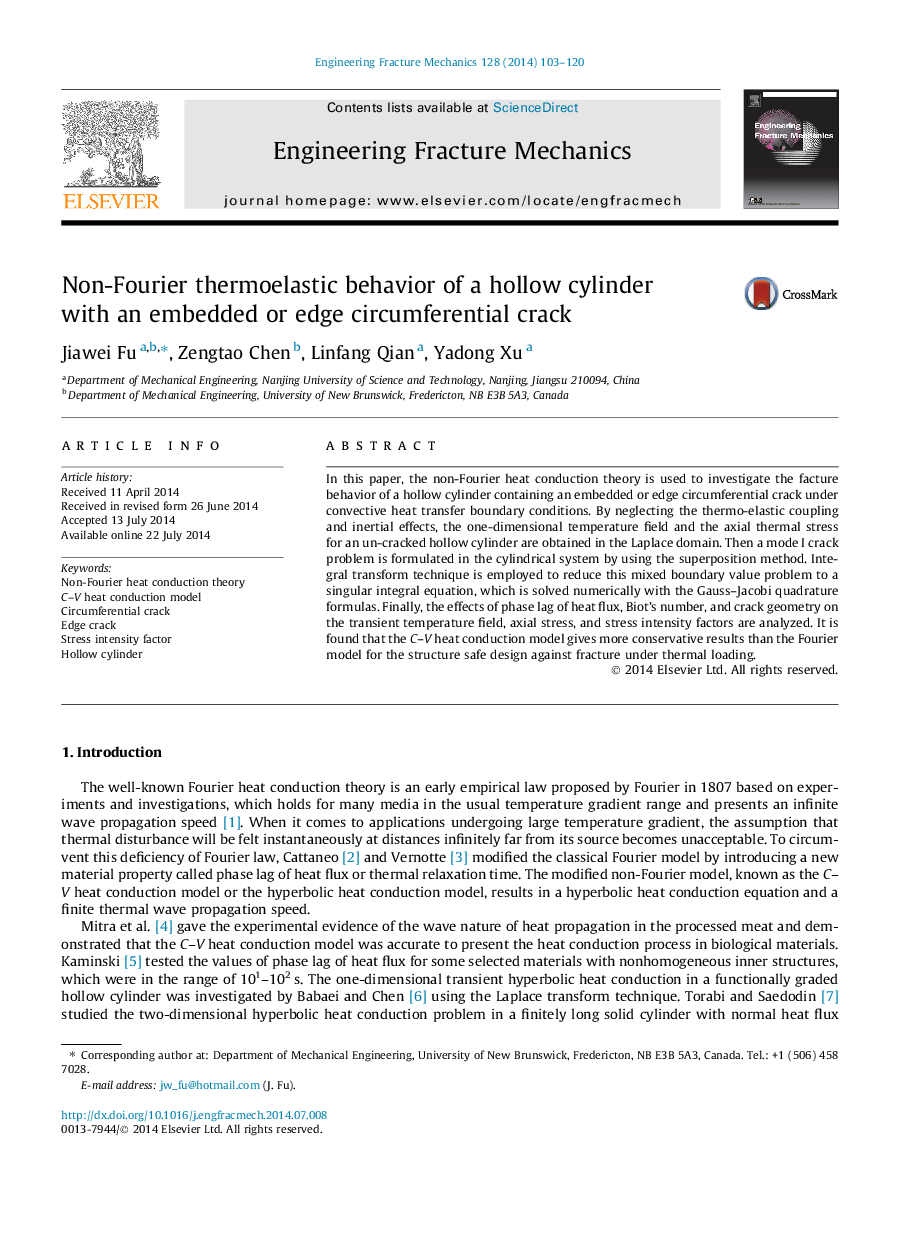| Article ID | Journal | Published Year | Pages | File Type |
|---|---|---|---|---|
| 774691 | Engineering Fracture Mechanics | 2014 | 18 Pages |
•The C–V model is used to analyze the fracture behavior of a cracked hollow cylinder.•Three different kinds of crack are considered.•Effects of phase lag of heat flux on temperature, axial stress and SIF are analyzed.•The convective thermal boundary condition is adopted.
In this paper, the non-Fourier heat conduction theory is used to investigate the facture behavior of a hollow cylinder containing an embedded or edge circumferential crack under convective heat transfer boundary conditions. By neglecting the thermo-elastic coupling and inertial effects, the one-dimensional temperature field and the axial thermal stress for an un-cracked hollow cylinder are obtained in the Laplace domain. Then a mode I crack problem is formulated in the cylindrical system by using the superposition method. Integral transform technique is employed to reduce this mixed boundary value problem to a singular integral equation, which is solved numerically with the Gauss–Jacobi quadrature formulas. Finally, the effects of phase lag of heat flux, Biot’s number, and crack geometry on the transient temperature field, axial stress, and stress intensity factors are analyzed. It is found that the C–V heat conduction model gives more conservative results than the Fourier model for the structure safe design against fracture under thermal loading.
